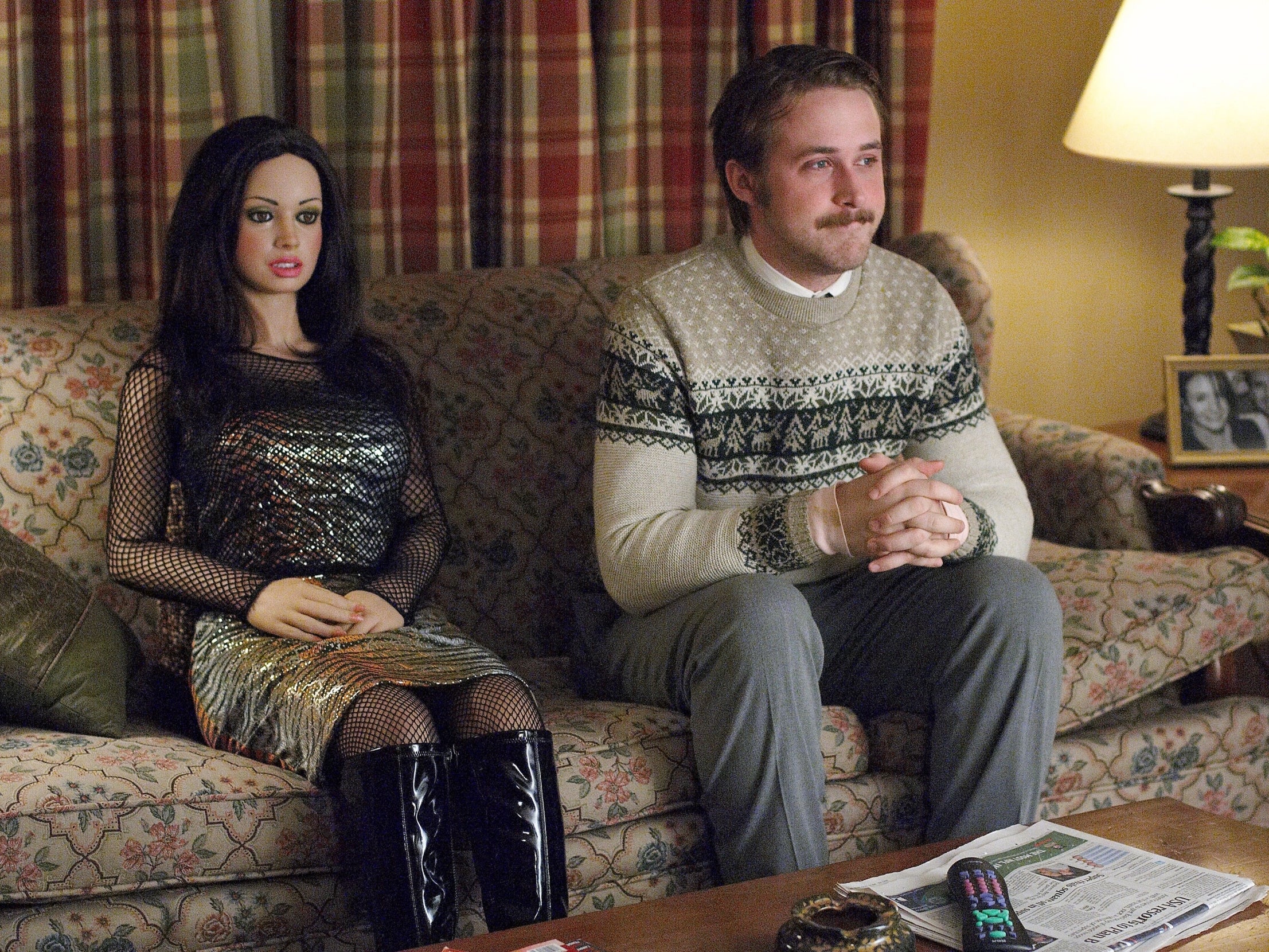The Indy Film Club: Sex doll romcom Lars and the Real Girl preaches empathy above all
You wouldn’t envy the marketing team tasked with selling a wholesome dramedy about a man who falls in love with a woman-shaped piece of silicone, writes Clarisse Loughrey, but it works


Before 2017’s I, Tonya – which crystallised the pain of figure skating’s most controversial figure – director Craig Gillespie found empathy in an even more unlikely subject. The Lars of Lars and the Real Girl, played by Ryan Gosling, is a lonesome young man. His mother died in childbirth. Grief-stricken, his father retreated from the world. Lars tries to suffocate that trauma under his buttoned-up shirts and thick, wool sweaters – barriers against the human touch, which he’s instinctively repulsed by. As he explains: “It hurts… like a burn.” He lives in a cabin behind a house belonging to his brother Gus (Paul Schneider) and pregnant sister-in-law Karin (Emily Mortimer), but evades them at every opportunity.
Then he finds his saviour: a “RealDoll”, or anatomically correct sex doll, he names Bianca. He introduces her to Gus and Karin as his new girlfriend: a half-Brazilian, half-Danish missionary. To explain her lack of mobility, he tells them she’s a wheelchair user. To justify her silence, he claims that she’s even shyer than he is. Both his loved ones, and the citizens of his small Wisconsin town, do their best support him, as confounded as they might be. In time, they grow strangely fond of Bianca. Some fuss over her hair and clothes; others invite her into their homes and workspaces.
It’s a warm, funny, and oddly tender film. It wears its naivete and belief in an essential human kindness as a badge of pride. The point isn’t that no small town in America would ever band together to guide one man through his mental health crisis, but that we deserve the momentary fantasy where one could. The film, which premiered at the Toronto International Film Festival in 2007, found critical acclaim – it even earned an Oscar nomination for Best Original Screenplay – but little public support. That’s not surprising. You wouldn’t envy the marketing team tasked with selling a wholesome dramedy about a man who falls in love with a woman-shaped piece of silicone.
Lars and the Real Girl only works because of how carefully Gillespie – alongside screenwriter Nancy Oliver – guides his audience through his quagmire of emotions. As the film critic Helen O’Hara wrote in Empire: “In the bright light of a more Hollywood sun, such a delicate love story could never have survived.” At times, we’re invited to laugh at how hopelessly antisocial Lars can be. At one point, Emily has to leap in front of his car and tackle him to the ground just so that he’ll come for dinner. But we fall a little bit more in love with him with every nervous, skittish retreat. Partly it’s because he speaks for every individual who’s struggled with intimacy and showing his vulnerability. But it’s also thanks to Gosling’s talents as a performer. He invests himself wholeheartedly in his characters, centring their pain and exposing their soul.
Both the depth of Lars’s trauma, which he adamantly refuses to talk about, and the hope he can work through it are sketched out in Gosling’s soft, taciturn expressions – when he’s nervous, Lars will blink a little too aggressively, and when he’s happy, a smile will creep across his face like a dawning sun. The film explicitly avoids discussion of Lars’s sexual impulses (because Bianca is religious, they sleep in separate bedrooms). Instead, it frames his relationship with the sex doll as something purely therapeutic.
Lars’s doctor and therapist, Dagmar (Patricia Clarkson), claims: “What we call a mental illness isn’t always an illness; it can be a communication, a way of working something out.” Clinically speaking, it’s a simplistic outlook. But it works for what the film’s trying to say. In Bianca, Lars finds a way to process his most deeply embedded fears: that his sister-in-law will die in childbirth, just like this mother, and that he will be betrayed if he opens himself up to love. Through his relationship with Bianca, as imagined as it might be, he’s able to quietly retrace and confront his traumatic past, with someone he knows will never touch him without his consent or overstep his personal boundaries. At one point, Lars takes her to the woods where he and his brother used to play. Later on, they visit his parents’ graves. He starts to take down the walls around him, brick by brick, attending family dinners and a co-worker’s party.
By the final reel, he hasn’t been magically cured; that would be too disingenuous of an ending. But the audience is safe in the knowledge that there are better things in store for Lars. Gillespie’s film might exaggerate the truth, but it offers a simple lesson: every person’s experience of mental illness is unique to them. Often it will seem incomprehensible to those around them. This shouldn’t matter – love and support them without reservation.
Join our commenting forum
Join thought-provoking conversations, follow other Independent readers and see their replies
Comments